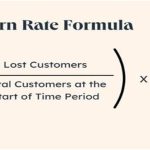Contact centers, formerly seen as cost-focused entities from a bygone era, have experienced a significant shift towards prioritizing the customer. Modern contact center solutions and compassionate customer service are now significant in swiftly addressing customer concerns, cultivating enhanced loyalty, and encouraging increased customer interaction and retention. This comprehensive guide explores the essence of a contact center, its key features, and how businesses leverage it to amplify their operational scale.
Understanding Contact Centers
A contact center is a vibrant group of agents tasked with managing all customer communications, both incoming and outgoing, through various channels like phone calls, emails, live chats, and interactions on social media platforms. The days of customers navigating complex phone trees are a thing of the past, thanks to the advancements in contact center capabilities. These centers integrate individuals, processes, and technology to provide effective customer support through various communication channels, fostering top-notch interactions that contribute to customer and business expansion.
Types of Contact Centers
Contact centers come in various types to cater to different business needs. The six key types include:
- Inbound Contact Centers exclusively manage incoming transactions, primarily emphasizing phone calls but may also oversee additional digital channels such as web chat, email, and social media.
- Outbound Contact Centers are specialized in initiating outbound calls, and serving various purposes including lead generation, upselling, debt collection, market research, customer surveys, appointment setting, and proactive customer service.
- Multichannel Contact Centers: Assist agents in managing customer inquiries across different contact channels, such as email, web chat, social media, etc.
- Omnichannel Contact Centers: Employ a comprehensive multichannel strategy that seamlessly integrates all communication channels, offering agents a complete perspective of the customer journey and enhancing the overall customer experience.
- Contact Centers On-Premises: These are conventional contact centers where the setup relies on physical infrastructure located within the business premises. This method is becoming less prevalent with the progression of cloud technology.
- Contact Centers in the Virtual/Cloud Realm: Also referred to as cloud contact centers, these utilize internet-based software deployment, eliminating the necessity for physical installations. Agents interact with the system through a virtual desktop interface.
Contact Center Software
Selecting the right contact center software is crucial for ensuring efficient and effective customer interactions. The specific contact center software requirements may vary based on your organization’s size, industry, and unique needs, but here are some common features and considerations to look for when evaluating contact center software:
- Call Routing and Queuing: Efficient distribution of calls to optimize agent productivity.
- Real-Time Analytics: Monitor key performance indicators for continuous improvement.
- Automation and AI: Incorporate chatbots and virtual assistants for streamlined processes.
- Compliance and Security: Adhere to industry regulations and security standards.
- Remote Agent Support: Provide tools for seamless remote work.
- Customer Feedback Mechanisms: Gather and analyze feedback for continuous improvement.
- Cost and Licensing Model: Consider budget alignment and value for money.
- Vendor Reputation: Choose a reputable vendor with excellent customer support.
- User-Friendly Interface: Opt for intuitive software to facilitate quick adoption.
Benefits of a Contact Center
- Improved Customer Service: Contact centers enable omnichannel support, shorter response times, personalized interactions, proactive outreach, and faster complaint resolution, leading to increased customer satisfaction, loyalty, and referrals.
- Operational Efficiency: Sophisticated routing tools distribute inquiries efficiently, increasing productivity, first-call resolution, process consistency, and the capacity to handle more interactions without expanding headcount.
- Valuable Data and Insights: Comprehensive integration of Customer Relationship Management (CRM) and other data sources provides holistic customer intelligence, enabling businesses to understand customer expectations, behaviors, and preferences: predictive analytics and interactive feedback fuel strategic decision-making.
- Enhanced Sales and Revenue: Many contact centers have dedicated sales teams and outbound representatives to drive lead generation, cross-selling/upselling, appointment setting, and higher deal closing rates, directly impacting top-line revenue gains.
- Cost Savings: Consolidating customer interactions allows businesses to use economies of scale and newer technologies to reduce overhead. Investments in automation and self-service also contribute to long-term cost containment.
Developing a Contact Center Strategy
Choosing the right contact center solution involves considering several key areas:
- Business Objectives: Align contact center purchases with overall business objectives.
- Customer Communication Channels: Ensure shortlisted vendors support all relevant communication channels.
- Critical Integrations: Confirm support for critical integrations, such as CRM tools used daily.
- Reporting and Analytics Capabilities: Evaluate the availability of comprehensive reports specific to the required data.
- Customers’ Experience: Assess the correlation between purchases and the improvement of customer relationships.
Affordability is crucial, but a more effective perspective is assessing the clear return on investment. Additionally, consider onboarding and support options, ensuring compatibility with operational needs.
Conclusion
Contemporary customer contact hubs have transformed into strategic resources that enhance customer satisfaction, foster loyalty, and contribute to business expansion. These centers play a crucial role in crafting positive customer interactions and streamlining operational efficiency by harnessing cutting-edge technology, extensive functionalities, and strategic applications. As businesses continue to embrace customer-centric approaches, investing in the right contact center solutions becomes paramount for sustained success.



